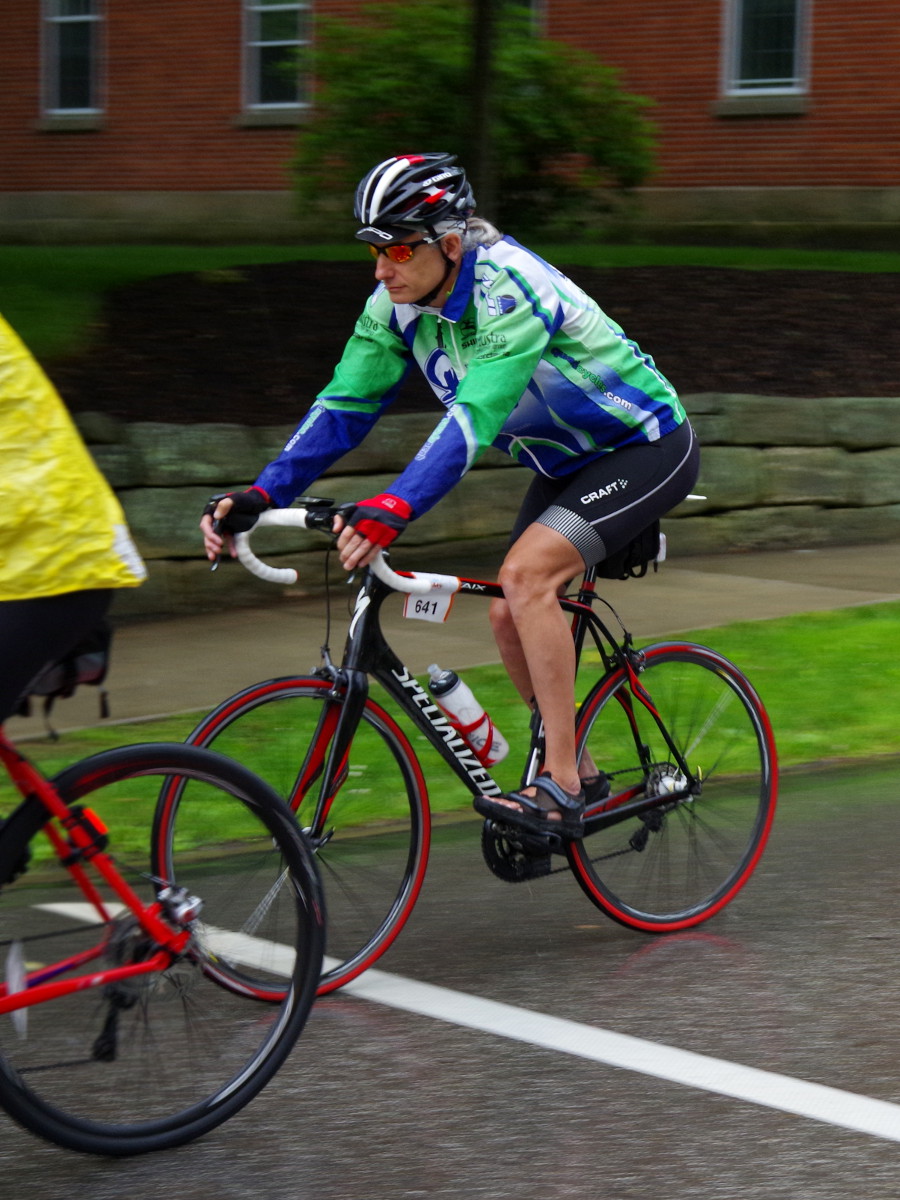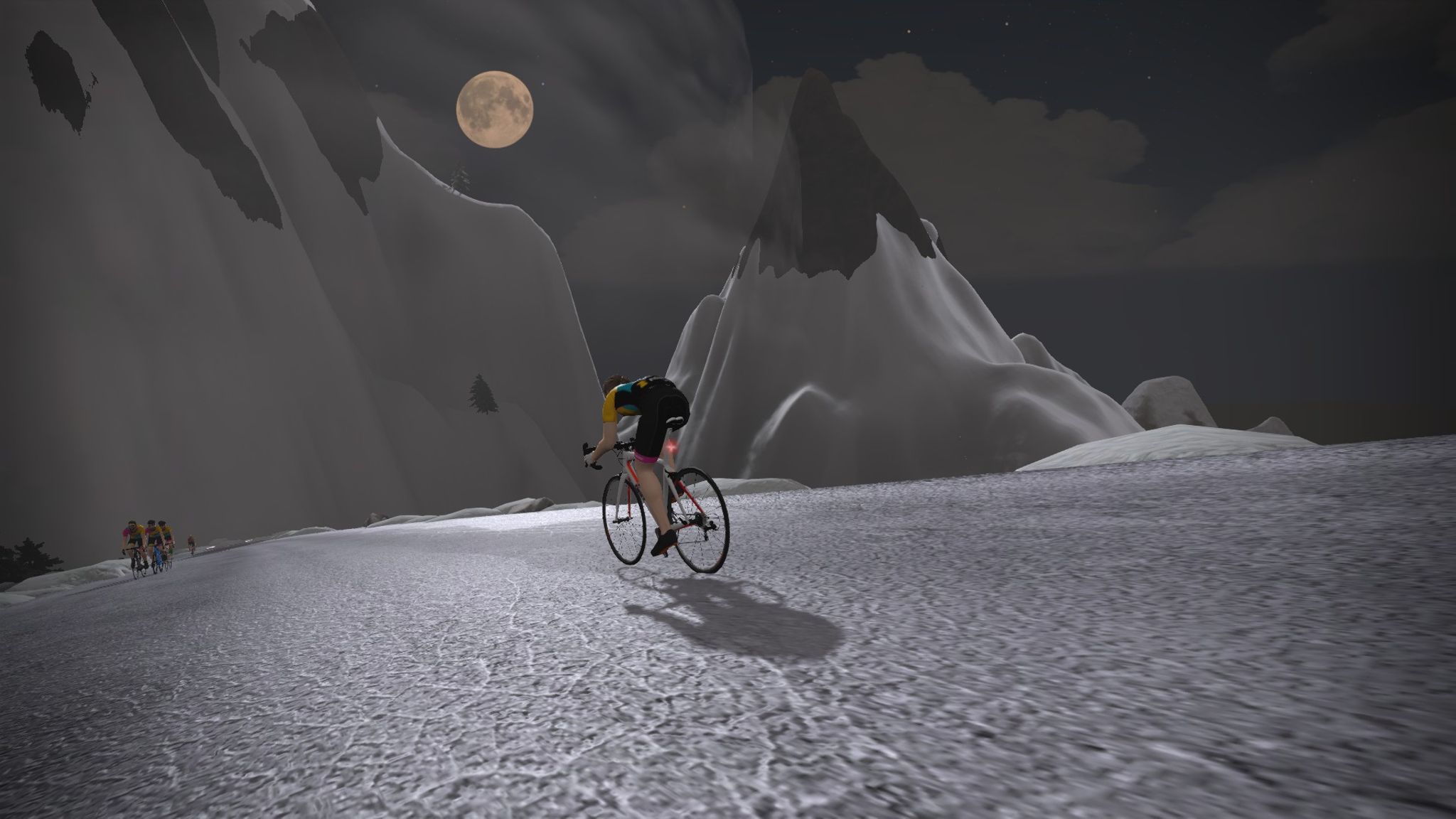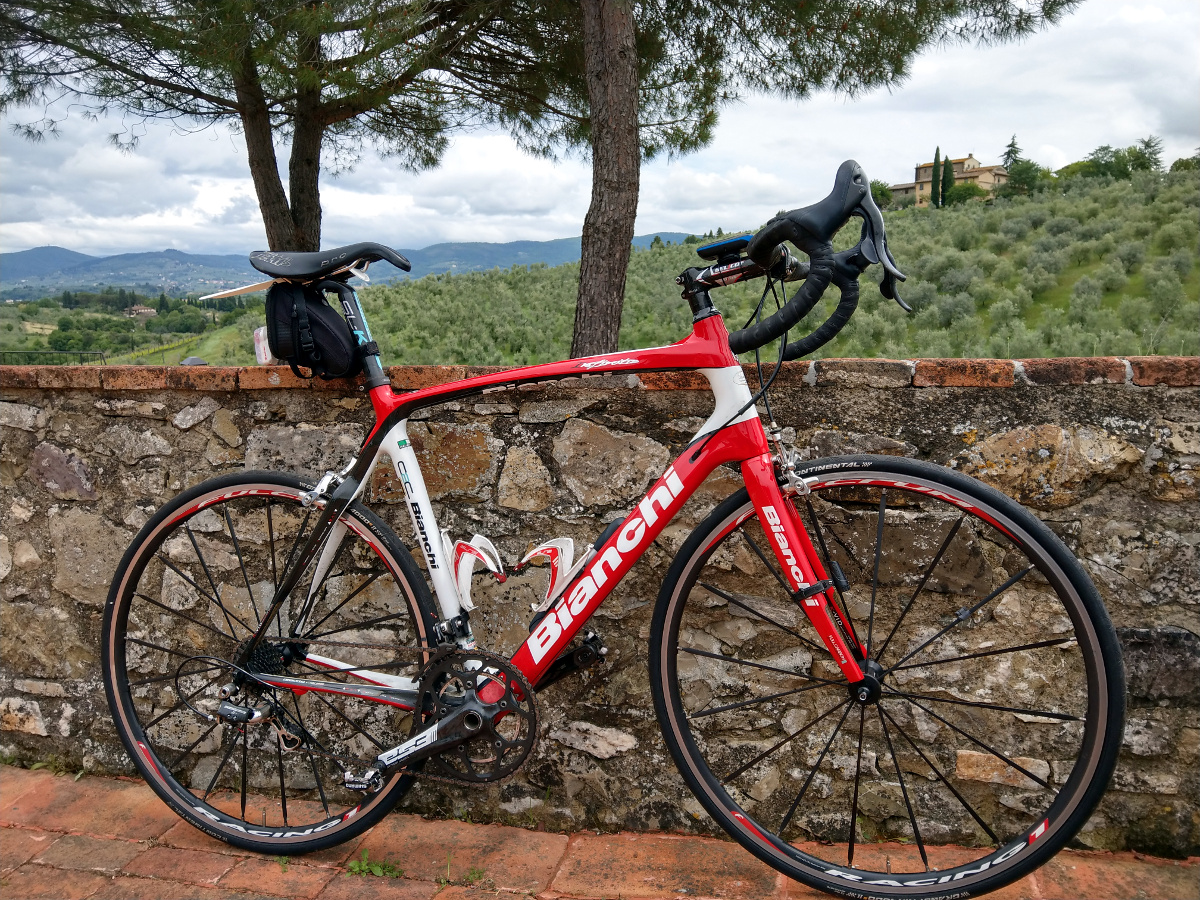One of the ironies of being hired by Buildium was that they field a team for the Cape Cod Getaway MS Ride. Being well-known for my cycling, I was pretty much obligated to ride, despite having made a big deal about quitting the PMC—the big charity ride I’ve been involved with for 14 years—last year. Nonetheless, I was looking forward to the MS Ride, which took place a week ago.
Another interesting bit is that it is kind of a clone of my yearly Outriders ride. Both go from Boston to Provincetown, and the two rides take place on consecutive weekends. The big difference is that Outriders is a single 130-mile day, while the MS Ride is 175 miles over two days. Or at least it’s supposed to be…
The day before this year’s ride kicked off, the weather report was bad enough that the organizers decided to pre-emptively cancel Sunday’s 75-mile leg up Cape Cod from Bourne to Provincetown. They expected driving rain and winds above 50 mph, which made it impossible for the ferry to run and bring riders back to Boston.
Since the storm wasn’t going to arrive until Saturday night, they decided to still hold the first day’s 75-or-100-mile leg from Boston to Bourne. It dawned comfortably cool and somewhat overcast. After getting up early and packing my bag, I hopped on my bike for a 4-mile warm-up ride down to the start at UMass Boston.
At the start I met up with the rest of the Buildium team, including former Sapient colleague Andrew Blackwell, whom I hadn’t seen in more than a decade. In addition to local and remote employees, our 60-person team included friends and relatives, people from the Seattle-based company we recently acquired, and investors. I also spoke to old friend Johnny H, who was manning the Quad Cycles repair tent.
Finally the starting time came, but not before some speechifying. Near the end, the captain for Team Velox Rota spoke in memory of Bobby Mac, the Quad Cycles ride leader in whose memory I’d devoted last year’s final Pan-Mass Challenge ride. He quoted two of Bobby’s most famous sayings: You can go fast, you can go long, but you can’t go fast for long; and: Ride with love in your hearts and smiles on your faces. I was taken completely by surprise, and had to stifle the tears it evoked.
Finally we took off. The team rode together for the first 20 miles, giving me a chance to socialize and take photos (Flickr photoset). One of my favorites is of Sapient alum and Buildium founder and CEO Mike Monteiro riding the first dozen miles in his rubber Crocs, having forgotten to bring his cycling shoes.
When we reached the first rest stop, I took one look at the line for porta-potties and got right back on my bike. I was destined to leave the group behind at some point, because I was the only person who planned to do the 100-mile route rather than the 75, and it made sense to push on now, rather than hang around in line at the rest stop. But as I rode through the far end of the rest stop, my bladder was gladder when I saw another whole row of porta-potties with no lines, no waiting! After a quick pit stop, I took off, picking up speed to ride ahead at my own pace.
Over the next couple segments I paid the price for having ridden slowly with the rest of the Buildium team. I skipped the second rest stop and sliced my way through packs of hundreds of riders, getting myself up toward the front. Then I saw three team members at the side of the road, fixing a flat. While I stopped to make sure they were all set, I watched as hundreds of riders I’d just passed returned the favor. Hoping not to lose too much ground, I set back off again in pursuit.
I pulled into the lunch stop at mile 40, hoping I was ahead of the bunch, and only stayed long enough to eat a bag of chips and fill my water bottle with ice and cola. I saw two Buildium jerseys there, but quickly pressed on.
Between fast riding and brief (or skipped) water stops, I was finally outpacing the main body of the ride. The roads finally opened up a bit for me, to the point where I was often riding alone, with only a couple other riders in sight.
About 50 miles in, near the point where the 100-mile ride forked off from the 75, I finally recognized one of the roads we were on. For most of the morning, we’d taken a much more coastal route than the more-familiar Outriders ride, which goes inland quite a ways. The route had been interesting, although the crowds hadn’t given me much opportunity to sightsee as we passed through unfamiliar towns like Cohasset, Hingham, and Marshfield.
As I passed (and skipped) another water stop, the road I was on ended in a T. Both the Outriders ride and the 75-mile route went left toward Plymouth, while the 100 turned right, adding an extra 25 miles of new and unknown roads. Those back roads circled around through cranberry bogs and into the sandy woods of the Myles Standish State Forest before popping back out for a short stretch on a familiar favorite, Long Pond Road.
On that extra 25-mile spur, I stopped to refill at the 60-mile water stop in Middleboro, but skipped the next one at mile 74. At mile 82 the routes merged back together again at another rest stop. As I rolled up, I heard someone exclaim that there were just 16 miles left of the ride, and I still had a full bottle, so I decided to just push on, skipping both remaining stops.
Although I’d been riding fairly strong up until that point, I was starting to tire and lose power, and a stiff headwind kicked up in advance of the evening storm. As I plodded my way into Bourne, I passed the scene of an accident, with police attending to a rider lying on his back in the middle of the road. Fortunately, I later learned he was okay.
Just a couple miles later I turned onto Academy Road for the familiar approach into Mass Maritime Academy, where the PMC also overnights. I rode across the line at 1:58pm, having ridden 102 miles in a surprising 6 hours 11 minutes. I checked in and picked up my event tee shirt and finisher’s medal. And in a riding sense, that was the end of my first MS Ride.
Originally, between my company beach day and Outriders and the Cape Cod Getaway, I had been targeting riding over 400 miles in eight days. However, with Sunday’s 75-mile ride to Provincetown cancelled, I wound up with only 350, which isn’t that stellar an achievement; after all, I did 300 miles in three days for last year’s PMC!
More importantly, after spending time in Provincetown after Outriders, I wasn’t going to get back there again after all. A week earlier, I’d said some tentative farewells to Provincetown, and it seemed like those would be my final goodbyes. “P-town” and the ride up Cape Cod are among the things I will miss most about New England when I move.
Having arrived at MMA, I tried to follow my tried-and-true PMC arrival ritual: pick up my bag, shower, and find the massage tent. The bag was easy. The shower was a little more difficult because I first had to find my room in the maze of MMA dorms, but I eventually found the right undifferentiated passageway and the nearest men’s room. The showers were hot and semi-private, and very welcome.
The next order of business was finding the Buildium team tent, which didn’t take long. There were a couple riders there from our investors, but I was the first employee to arrive, and with four idle masseuses, I stepped up and took a well-earned turn on the table.
Then there was some food and socializing, but it was a good two hours before any other teammates arrived. After canceling Sunday’s ride, the organizers had allowed people to ride the 100-mile route even if they’d only signed up for the 75, and a large number of Buildians took advantage of that offer, most of them doing the first century of their lives. I was really proud and impressed with them, and glad to see them finish the day smiling.
By 8:30pm, the promised sprinkles began, the party started getting sloppy, and I chose to go back to the dorm to get a head start on sleep. As usual in the dorm, sleep was a rare commodity. I don’t think I got more than a couple hours of it before loudspeakers started barking instructions at 5am Sunday morning about gathering bicycles on trucks bound for Boston.
I went down to the cafeteria and discovered that some of our team had already hopped buses north, so apparently it was every man for himself. I went back to the room and packed up, then met up with Tora on her way out.
We went straight to the buses waiting outside, but despite having an umbrella, I wound up soaked to the bone by a wind-blown deluge. The wind gusted up to 57 mph, and we set records for rainfall and the lowest high temperature for that date. As we waited for the bus to leave, our company president, Dimitris, dragged himself on board. So much for his advice the night before of sleeping in late and gathering as a team!
After an hour on the bus, I was discharged into the UMass Boston parking lot where we’d started. Thankfully, I immediately spotted my bike and got ready to ride home. Needless to say, I had to fight the rain and the wind all four miles back to my condo, and left large puddles marking my route from the building’s entryway to my unit.
But by 8am I was standing in my bathtub, stripping off my sopping-wet jeans and tee shirt. At least I had the rest of the day to warm up, dry off, and recover from my first MS Ride!
Here’s the Strava GPS log, and here’s my Flickr photoset.
So that’s the story; what about the summary?
Overall, it was a good experience. I’m really proud and impressed by the company, which fielded a team of sixty riders, many of whom rode their first centuries, and who raised about $83,000 this year, making us the fifth largest fundraising team in the event.
The ride itself was nice, and I enjoyed doing a route that covered a lot of new ground. Of course, I’m very disappointed to have missed what was probably my last opportunity to ride up the cape to Provincetown, but canceling Sunday’s ride was definitely the right decision.
Naturally, there are big differences between the MS Ride and the PMC, starting with a fundraising minimum of $500, rather than $5,000, which relieved me of the PMC’s huge fundraising effort.
Starting in Boston allowed me to ride to the start, rather than having to get a hotel out in Sturbridge. Giving each team its own little tent—and its own masseuses!—was different, and seemed to work well. And I have to admit that I’ve always been disappointed that the PMC doesn’t give out any kind of finisher’s medals.
But the biggest difference was that this was the first charity ride I’ve ever done as part of a team, rather than as an individual. Rolling out as a group was cool, as was riding together (at least as far as the first water stop). Seeing other riders along the route wearing our team kit gave one an instant icebreaker. And I was guaranteed to have a big group of friends to hang out with at the finish. Those all made this ride a very different experience from my 14 years as a solo PMC rider.
So overall, despite losing Sunday to a monsoon, I really enjoyed doing the ride, and—for the first time—sharing it with so many of my friends and co-workers.












































